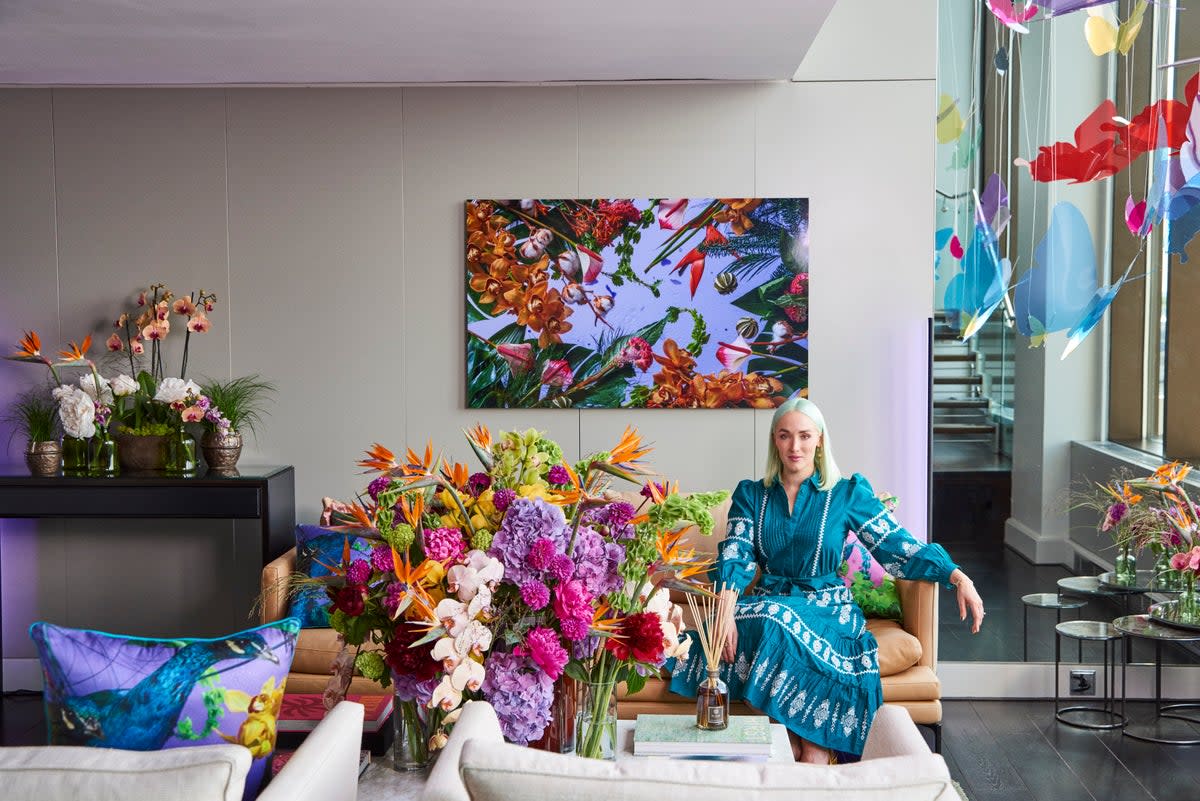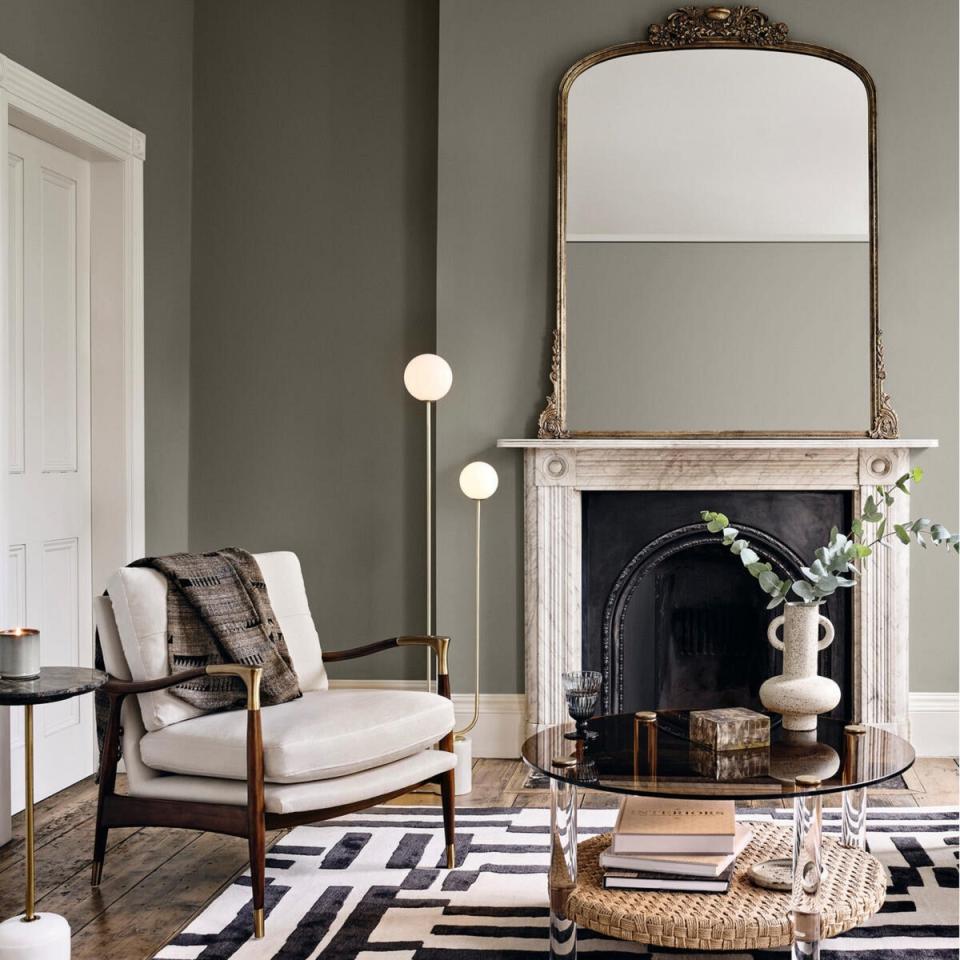Rethinking the way we bring design into the home

“I’m obsessed with interiors and spaces, and feel that curating your home should be an act of producing a piece of art,” says Claire Luxton, the multi-media artist who is responsible for the new, eponymous Claire Luxton Suite at InterContinental London Park Lane. It is the hotel’s London Suite that Luxton has transformed into an urban oasis, filling the rooms with double-height sculptures, tropical floral displays and mood-altering lighting, fragrance and sounds. Luxton is one of a new generation of creatives disrupting the way we bring art and design into our homes, tripping the traditional accumulation of decorative pieces for the home into something new and exciting.
For Luxton, home decoration goes beyond “hanging art on the wall or choosing a few cushions”. She believes in a more holistic approach to decoration, “from the visual to the aural, the texture to the fragrance” of one’s surroundings. For the Claire Luxton Suite, she created a full fragrance profile and a variety of soundscapes to allow guests to immerse themselves fully in the experience of existing in the space, the design scheme of which was inspired by Luxton’s extensive travels. Luxton’s design concept was geared towards “creating a space that elevates every day of your life,” a principle she believes should be liberally applied to the home. “It’s about lifting you out of the everyday. If you can do that, your home certainly classifies as a piece of art,” she says.
Investing in your home as a piece of art is a wise move. Bringing in design-led kitchen cabinetry, worktops, flooring and even appliances can increase a home’s value, but nothing will add uniqueness and character as much as original or reinstated period features in an older property. Owen Pacey, the founder of the fireplace restoration company, Renaissance London, recently completed fireplace installations in a London townhouse that was devoid of all its original Georgian architectural details, bringing it back to its former glory with a contemporary twist of colour and style. Pacey’s knowledge of fireplace profiles and styles is vast, so he was able to source the right bolection silhouettes for the period and architectural style of the property, while adding colour in unexpected ways.
According to Pacey, trends in the fireplace market among renovators are pointing to colour. “Bolection fireplaces with green or even purple veining are increasingly popular,” he says. “They are truly artworks in themselves and can lift a room.” The move towards colourful fireplaces implies a rise in popularity of bolection fireplaces more generally, and for Pacey, “this is because they span all periods and are available in many colours. You can choose from a variety of marbles and stone, and their structural simplicity lends itself to so many settings.”

While design purists may be tied to more traditional ways of curating the home as a piece of artwork, there are some designers out there looking to completely rethink the way we interact with the pieces we bring into our homes. Julia Bancilhon, founder of the wallpaper studio Made of Matter, launched a collection of augmented reality wallpaper at Salone Del Mobile, the design fair that took place earlier this month in Milan. The wallpapers are printed on 147gsm paper and are supplied with a QR code that initiates the wallpapers’ animation when viewed through digital devices. The collection was created with Detroit-based experimental animator and designer Michael Cullen.
“The pandemic has forced us to look at our surroundings from a new perspective and to provide new narratives and purposes to objects, rooms, and places in our daily life,” says Bancilhon. “With this collection of wallpapers and artworks, I wanted to try to understand how augmented reality can participate in changing the narrative within domestic landscapes,” she says. Echoing Luxton’s efforts to bring people out of everyday life with design, Bancilhon aims to “give life to what is usually stationary, to drag us away from boring and conventional reality.”

Of course, approaching design and art in the home from an aesthetic perspective is crucial and the way each room looks and feels directly impacts the way you live within its walls. However, provenance and process are huge draws for buyers of artwork and collectable design pieces. The way something was created can add to its personal value to the owner, and a connection can be forged between viewers and the artist themselves when one comes to an understanding of the artistic process, or perils, undertaken to achieve a certain finish.
Think of Warhol’s Shot Sage Blue Marilyn, which sold last month for $195m at Christie’s, the most expensive 20th-century artwork ever to sell at auction. Warhol’s well-known technique of hugely time-consuming and difficult silk screen printing was certainly a factor in its astronomical sale price, which increased in increments of $10m in the auction room. Joanna Flaum, head of post-war and contemporary art at Christie’s, told the LA Times, “[these works] have an extraordinary quality when you stand in front of them, but it took too long for him [to execute], frankly, as someone whose studio was referred to as the Factory – and he never went back to that technique. So these Marilyns stand as these unbelievable examples [of silk-screening] and are very rare.” Taking an interest in the method of creation, be it a painting or a handcrafted object, can be a particularly liberating way to approach the way we bring design or art into our homes.
Orlanda Broom is a contemporary artist whose processes are also highly intrinsic to the sales of her work. Her buyers take a keen interest in the way she works with resins, which spread to create organic shapes in vibrant colours, paying equal attention to the making as they do to the final product. In her techniques, Broom is inspired by the action paintings, or gestural abstraction, of abstract expressionists including Jackson Pollock and Arshile Gorky. The specific process involved in making these paintings is instrumental in their creation.
Decorating in these ways, from Luxton’s holistic elevation of the everyday to the principles of process and story behind the artwork in your home, can open up new avenues for experimentation at home. Choosing design pieces or artworks in styles you know you love will always be a pleasure, but considering a fragrance pairing for an immersive experience or discovering more about the way a local artist works will bring new meaning to the home as you curate it as a work of art in itself.

 Yahoo Movies
Yahoo Movies 
